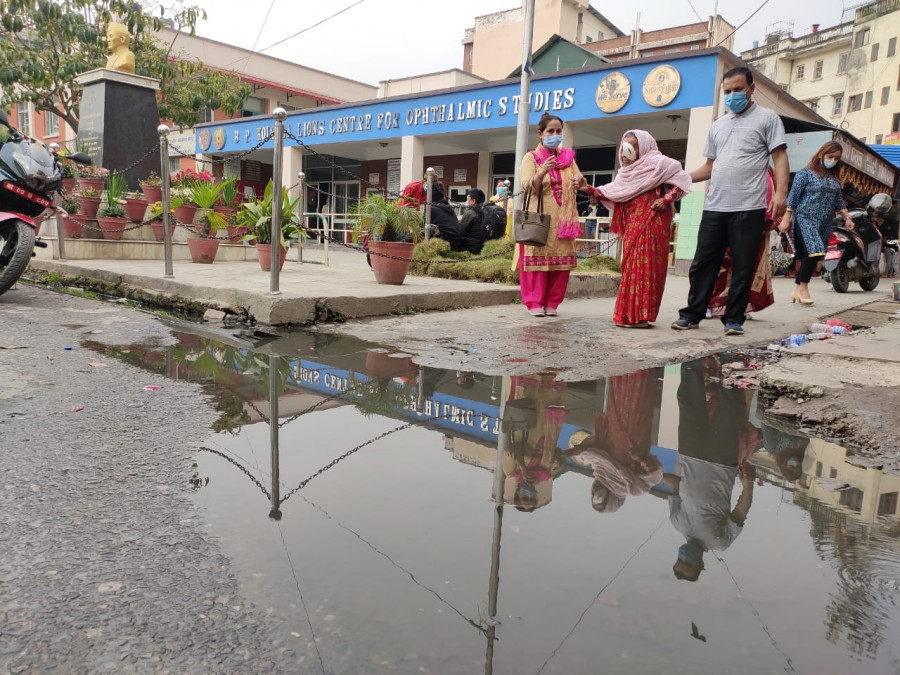Editorial
Watch your step
Neglected open sewers in the city should be a matter of criminal negligence.
Broken roads, unmarked sinkholes, myriad potholes, protruding manholes, dilapidated bridges and open sewers are scattered across the nation’s capital. One can get a sense of the magnitude of the state of neglect across the country if Kathmandu lies in such a state of ruin. Rarely does one get to traverse around Kathmandu unhindered by life-threatening obstacles. The satisfaction of a re-layered tarmac is usually short-lived. It is as if we are forever cursed to deal with inaccessible roads; for just after getting the road back to accessible condition, the waterworks department or the electrical authority finds a reason to re-dig the fresh asphalt to leave it in a state of impassable mess.
A few days ago, the media published a report about an unfortunate incident of a child accidentally falling into an open sewer. With the help of a few locals, the police are frantically trying to ascertain the identity of the missing child, which in itself is a bizarre scenario. The message from the urban planners and those responsible for their maintenance seems pretty clear; when walking the streets of Kathmandu, you better rely on your intuitive faculty to come to your rescue, lest you end up in an open sewer. The fall may have been accidental, but the neglected open sewer should be a matter of criminal negligence. Concerning local infrastructure, the onus indeed lies with the local authorities to get their affairs in order.
Employing a concerted, coordinated effort is just the start to overcome shoddy repair work. This would solve the haphazard destruction of freshly tarred roads. Instead of leaving them in absolute disrepair, authorities should conduct frequent checks on the state of local infrastructure to avoid expensive re-work. A stitch in time saves nine. The old maxim should remind the authorities of the importance of timely repairs. The other is the quality of the materials used. It is quite noticeable that barely a few months after being repaired, the roads, bridges and other infrastructural additions seem to give way to absolute disuse. Once again, there seems to be total disregard in checking to see what the contractors use or where they procure their materials from. Being penny wise and pound foolish may line the pockets of a few, but it robs the people of everyday convenience.
After years of living in darkness, in May 2018, officials of the Nepal Electricity Authority announced the country to be free from load-shedding. Lately, we are once again experiencing sudden power cuts. However, there seems to be no electricity shortage, but the finger blatantly points to the crippling state of the decades-old infrastructure flickering to survive.
Building and maintaining national infrastructure is not just about providing convenience to the masses. That goes unsaid—but in an extreme situation due to lack of investment in infrastructure, we saw a Nepali national, Jai Singh Dhami, living in Darchula, Nepal, crossing the border into India to reach the district headquarters Khalanga, and losing his life in the process. Investment in infrastructure is about a country’s economic success too. One only has to look around at the economically prosperous nations to draw comparisons against those that are not.




 16.12°C Kathmandu
16.12°C Kathmandu














